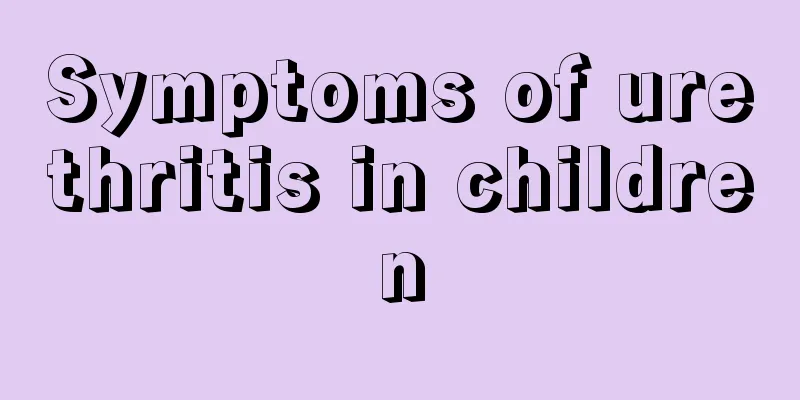Symptoms of urethritis in children

|
Urethritis is no longer just a disease that occurs in adults. In recent years, medical data show that the number of cases of urethritis infection in children is gradually increasing. Children have become one of the high-risk groups for urethritis, which requires parents to pay great attention to it. Because children are young, they will not be able to explain their illness in detail and need assistance from their parents. What are the common symptoms of urethritis in children? In children, mild urethritis may have no symptoms, with only bacterial growth in urine culture; in severe cases, there may be fever or no temperature rise, pale complexion, irritability or drowsiness, and some may also present with jaundice, convulsions or gastrointestinal symptoms. When infants and young children get sick, they have obvious systemic symptoms, such as fever, sallow complexion, vomiting, diarrhea, abdominal pain, abdominal distension, and may also have neurological symptoms such as restlessness, drowsiness, convulsions, and coma. When the urinary tract symptoms are mild, they only manifest as urinating.2 Urethritis in children: When older children get sick, they are similar to adults. When they suffer from pyelonephritis, they have fever, chills, and percussion pain in the kidney area (waist) on both sides; when they suffer from cystitis, they have frequent urination, painful urination, and hematuria; when they suffer from urethritis, there is a burning sensation and redness and swelling of the urethral opening. Chronic urinary tract infection is mostly caused by persistent acute urinary sensation. It can also be caused by urinary tract malformations. This is different from adults. The course of the disease is more than 6 months, or it relapses many times. The renal nature remains obvious, and the renal function is never restored and becomes chronic. The sick child may show symptoms of mental depression, fatigue, fragility, slow growth, progressive anemia, etc.3 Since the urinary sensation in children is rarely limited to the above-mentioned parts and is sometimes difficult to identify, it is often collectively referred to as urinary tract defamation. Acute urethritis is the most common in children. Its symptoms are not like the typical frequent urination, urgency and pain in adults. Its symptoms vary greatly. When newborns get sick, the severity of the illness varies. The diagnosis of urethritis is important because, in addition to the fact that the acute phase of urethritis in infants and young children may cause fatal sepsis, some patients have potential congenital urinary tract malformations, more than 80% of which are vesicoureteral reflux. In terms of treatment, patients with more severe reflux must use preventive antibiotics or undergo surgical correction, otherwise the child may suffer from recurrent kidney inflammation and lead to irreversible and serious kidney disease.Therefore, when a young child suffers from urethritis, the doctor will arrange for ultrasound, cystourethrography or other examinations to determine whether there is a possibility of congenital malformations. It should be noted that in terms of subsequent medical treatment, patients must be given antibiotics for 7 to 10 days. |
<<: Causes of yellow runny nose in children
>>: What are the benefits of boy's urine?
Recommend
White spots on the corners of the child's eyes
If white spots appear on the corners of children&...
Can babies drink cantaloupe juice?
Babies need a variety of nutrients during their p...
Why do children have small testicles?
Generally speaking, when the testicles are relati...
What to do if a child has repeated fever due to stomatitis
If a child has recurring stomatitis, you should p...
What is the problem of white spots on children's nails?
When parents are taking care of their children, t...
Six-year-old child has pain in the knee
Six years old is the critical period for children...
What affects the sleep time of newborn babies?
Many parents are troubled by the sleep time of th...
What causes blisters on a child’s buttocks?
It is a very common phenomenon for children to ha...
Is it hereditary to not have breasts at the age of 14?
For women, the development of secondary sexual ch...
What to do if your child has internal heat
The so-called internal heat is a phenomenon of ge...
What to do if pharyngitis causes fever
Pharyngitis mainly affects the mucous membrane of...
How to tell if a newborn is calcium deficient?
The phenomenon of calcium deficiency in newborns ...
Does glucose have any effect on jaundice?
If a newborn has too much bilirubin in its body, ...
What should I pay attention to if my 3-year-old baby drools while sleeping?
When a baby is young, it takes a certain process ...
What are some recipes for children to grow taller in spring?
Spring is a season of growth, and it is also a se...









